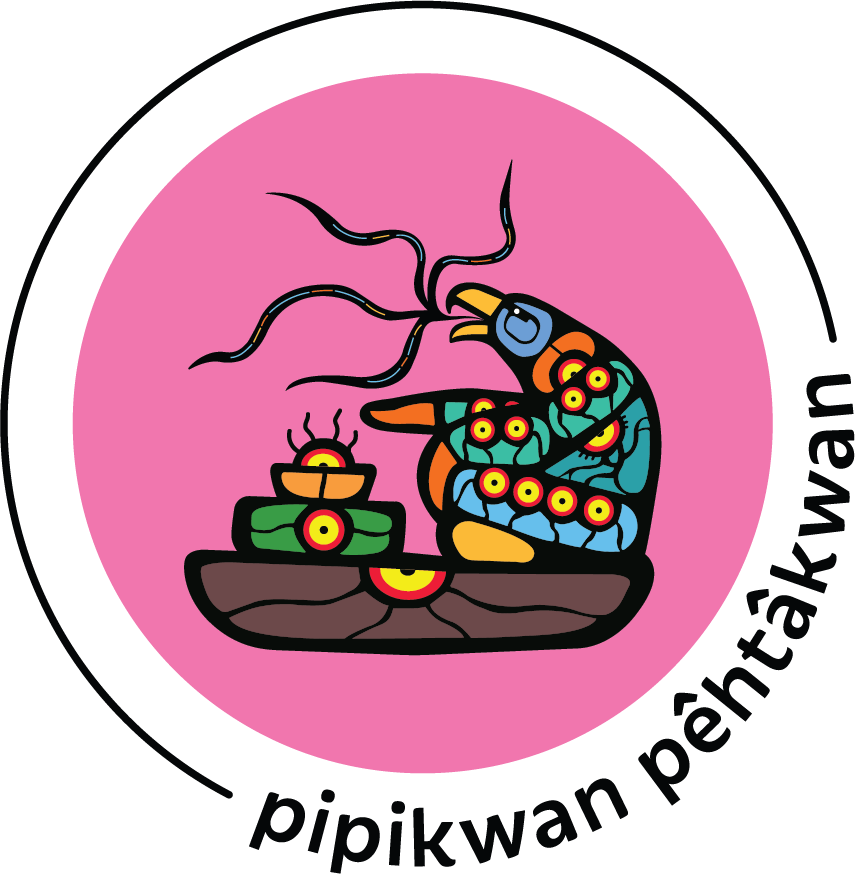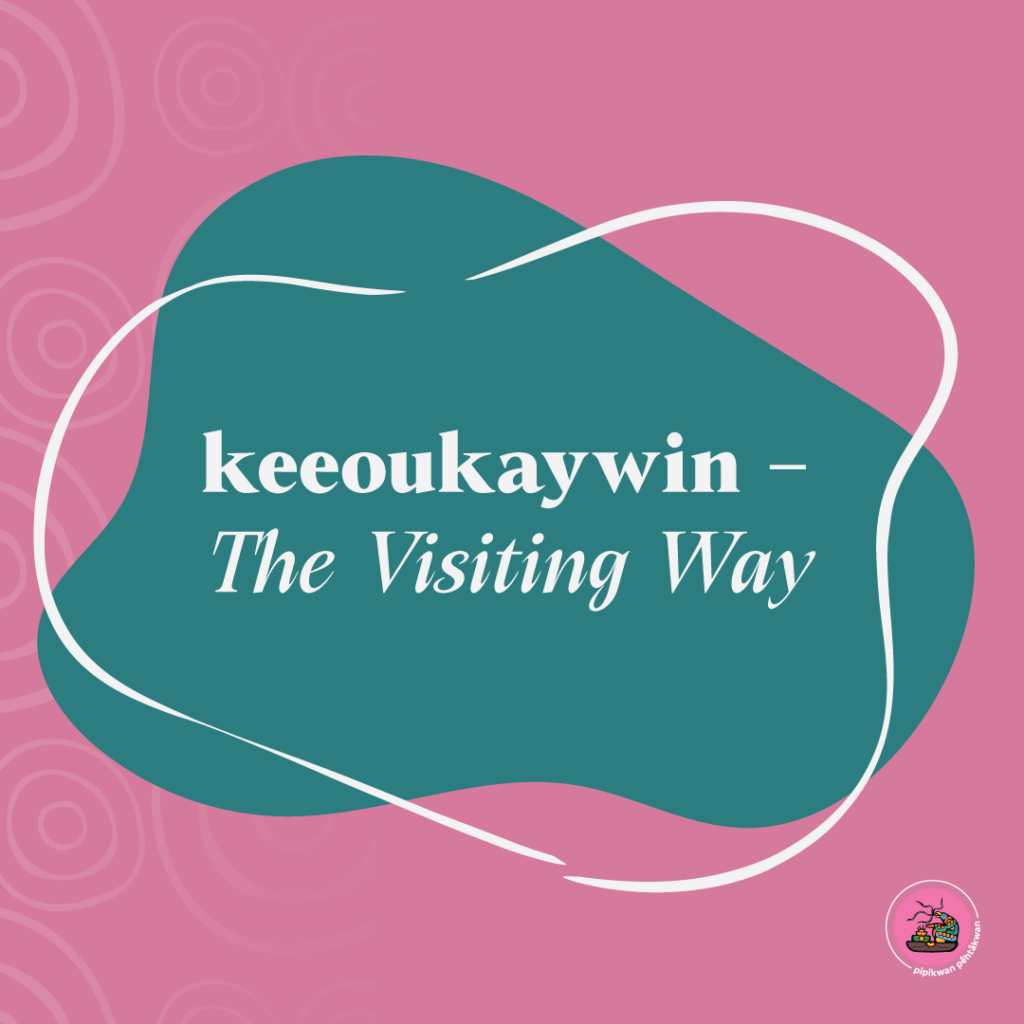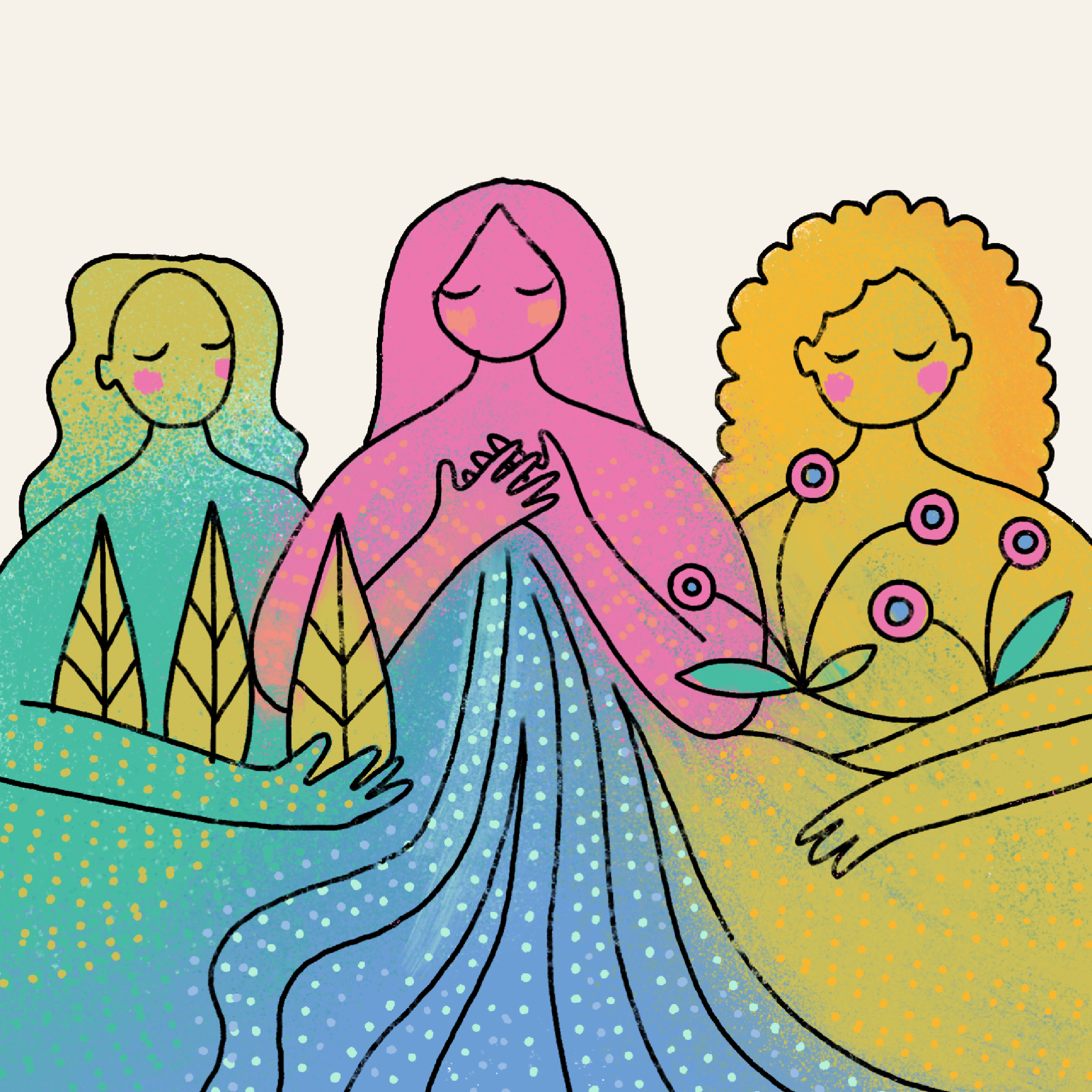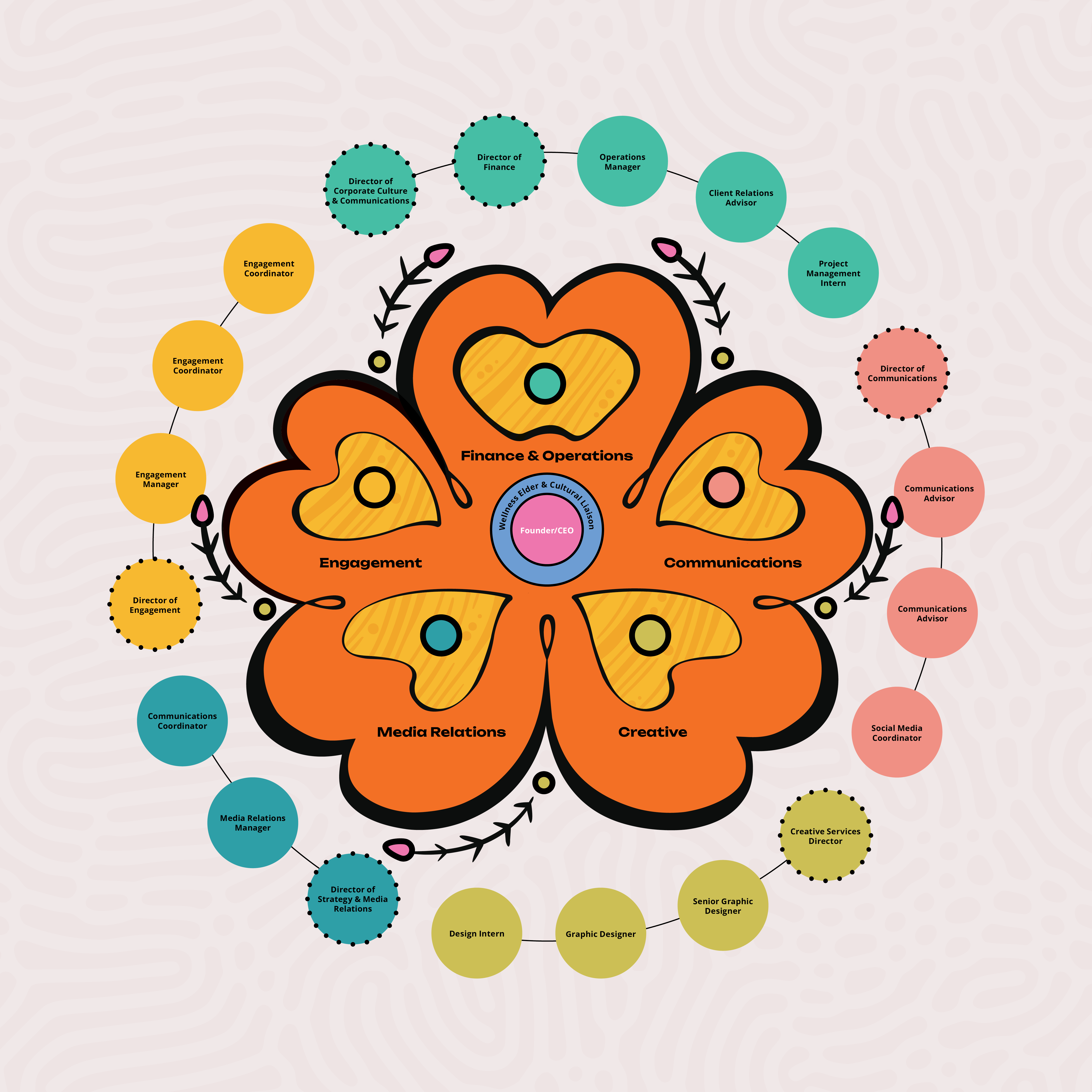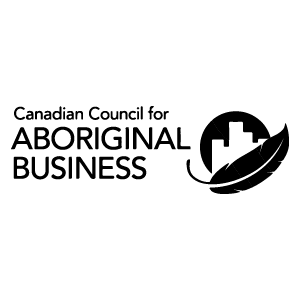Recently, the engagement team at pipikwan pêhtâkwan spent some time hiking through Whitemud Creek with a number of community members and Elders. Bundled in our winter jackets, feeling our way across the trail, each of us was reminded of what it is to visit, to listen and to connect, not just with one another, but with the land. I watched an Elder with his aching knees bend down to the ground, beckoning a squirrel toward him. The squirrel was cautious but interested. The Elder gave it space until it felt ready to move closer. I stopped to watch the exchange, fascinated that these two even bothered to acknowledge one another.
At that moment, I was reminded of what it is to respect the land and its keepers. I was reminded of what it is to be slow, silent and curious. A synergy was created between us, the elements, the plants and animals. We respond to the weather. We respond to the shape of a path interrupted by roots and rocks. We respond to the sounds of birds and the breeze.
Remembering is an act of both mundanity, and for many Indigenous People, an act of political significance. In his essay Children, myth and storytelling: An Indigenous perspective (2017) professor Gregory Cajete writes, “to remember is a way to re-know and re-claim a part of your life.” At pipikwan pêhtâkwan, our work is to engage with community in a way that remembers the teachings of visiting.
keeoukaywin is a Cree term meaning “the visiting way”. The term was gifted to Indigenous scholar Dr. Janice Cindy Gaudet when conducting research with the Omushkego people living in Moose Cree First Nation. In her research paper, keeoukaywin: The Visiting Way—Fostering an Indigenous Research Methodology (2019), she writes:
keeoukaywin points to special times and spaces in which connections are strengthened, stories are heard, remembering occurs, and we are reminded of who we are and of our responsibility for the well-being of the whole. It offers an Indigenous view of community-based, participatory research methodology, and stands on its own as a viable methodology…It is part of land-based societies’ way of life. It guides the way we conduct ourselves, treat one another, and learn from one another and from the land itself.
The Visiting Way is foundational to the research we engage in at pipikwan pêhtâkwan. Our work is more than engagement for the sake of report writing or data collection, it is relational and rooted in a deep care for the communities we visit with. Any research I had done prior to this involved sitting at a desk, a computer, or in a library. It was quiet, lonesome work. The kind of work I’d become accustomed to over the course of a pandemic. The kind of work that lent little to community accountability but the kind of work that followed a familiar colonial process, with a ‘put your head down and stay busy’ mindset. Colonial work requires disconnection—it reinforces its own “intellectual hierarchy” (Gaudet, 2019) and excludes the wisdom of kinship and balance. Gaudet writes, “keeoukaywin inspires decoloniality, and how it is vital to the continuity of living and being. Vital, as it richly textures everyday life. Vital, as it is how we come to know, and to re-know.”
Visiting work requires presence and relational accountability—two things that are often lost in colonial work and dismissed as passive forms of research. But, as Gaudet (2019) says, “there is nothing lazy about visiting work. On the contrary, keeoukaywin is practical, social, political, and spiritual.” This kind of work involves “a commitment to reciprocity” (Gaudet, 2019) that keeps us accountable to one another. It is anything but passive.
It’s not in papers, surveys and emails that we find ourselves grounded in relationality; it’s in the visiting—the bus ride from River Cree to the ravine, the Métis Elders laughing amongst one another, the tension at a long-table discussion over land-claims, the uncomfortable shifting of eyes, the smell of stew and bannock, the aching knees of an Elder on a cold hike through the trees. It’s in the visiting that we connect and build trust. It’s in the connection that we create understanding, and what is research for, if not to understand?
